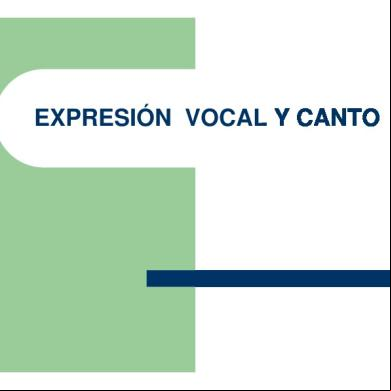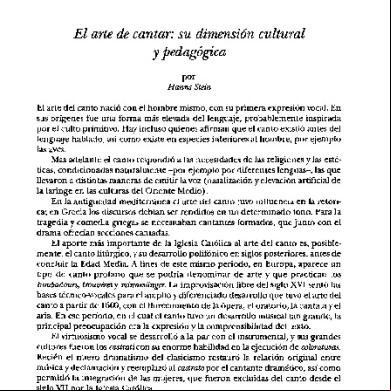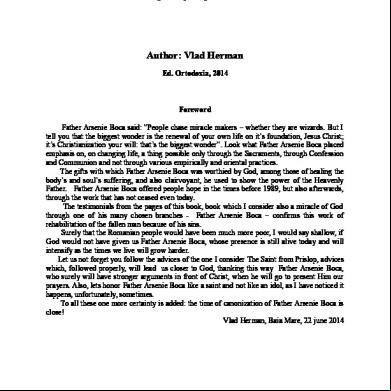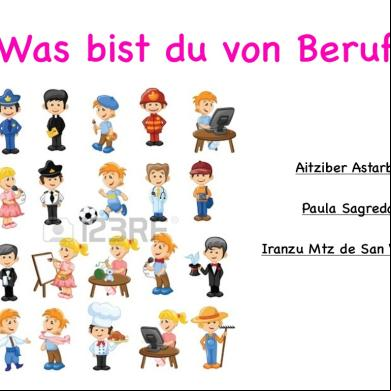Math-week 1 3y5s5r
This document was ed by and they confirmed that they have the permission to share it. If you are author or own the copyright of this book, please report to us by using this report form. Report 2z6p3t
Overview 5o1f4z
& View Math-week 1 as PDF for free.
More details 6z3438
- Words: 1,779
- Pages: 9
Who are we and what do we want? This activity is for us to get to know each other and set the stage for the course. 1. 1.1 Welcome from Dr. Yossi Elran video (01:37) 2. 1.2 Why are you taking this course? discussion 3. 1.3 The encoding of Math problems vs. Secret Codes vs. Symbology article 4. 1.4 The challenge from outer space video (00:33)
First taste of cryptarithms - Hindu Cryptarithms In this activity we will tackle our first cryptarithms - Hindu cryptarithms 1. 1.5 A few preliminaries article 2. 1.6
What are cryptarithms? article 3. 1.7 Ancient Hindu Problems article 4. 1.8 Some simple Hindu Cryptarithms video (01:16) 5. 1.9 Hindu Cryptarithms quiz 6. 1.10 Questions, anyone? discussion
Alphametics Alphametics are cryptarithms that spell out words 1. 1.11 What are alphametics? article 2. 1.12 How to solve alphametic puzzles video (01:54)
3. 1.13 Alphametic Quiz quiz 4. 1.14 Let's talk about the alphametics quiz discussion
Special and Unique Cryptarithms Explore some more complicated cryptarithms 1. 1.15 Tests of divisibility and more hints article 2. 1.16 Different genres of cryptarithms article 3. 1.17 Advanced cryptarithm quiz quiz 4. 1.18 Solve the alphametic part of the course challenge video (00:36) 5.
1.19 Challenge solution video (05:18) 6. 1.20 Questions, anyone? discussion
Week wrapup First week summary and test 1. 1.21 Week summary, further reading and discussion discussion
What are alphametics? Alphametics are cryptarithms that spell out words. Given a mathematical expression, every digit in the expression is replaced by a letter. One of the most famous alphametics, spelling out ‘SEND MORE MONEY’ appears above. This alphametic was first published by Henry Dudeney, a British puzzlist, in 1924. Five rules govern alphametics: 1. Identical digits are replaced by the same letter. Different digits are replaced by different letters. 2. After replacing all the letters with digits, the resulting arithmetic expression must be mathematically correct. 3. Numbers cannot start with 0. For example, the number 0900 is illegal. 4. Each problem must have exactly one solution, unless stated otherwise (unlike the “Hindu” problems where there might be no solution or multiple solutions). 5. The problems will be in base 10 unless otherwise specified. This means that the letters replace some or all of the 10 digits – 0, 1, 2, 3, 4, 5, 6, 7, 8, 9.
Let's talk about the alphametics quiz The quiz was pretty tricky. I’m sure you’ve run into some difficulties or challenges. That’s why we’ve added this discussion step! Feel free to post any questions or comments about the questions or topics covered! © Davidson Institute of Science Education, the educational arm of the Weizmann Institute of Science
Tests of divisibility and more hints Some multiplication rules can really help us when we get stuck on a cryptarithm. Here are some rules you should know before taking the ‘plunge’ into the more difficult problems…
A number is divisible by 2 if it’s unit’s digit is an even number. A number is divisible by 3 if the sum of its digits is divisible by 3.
A number is divisible by 5 if the number ends with a 0 or a 5.
A number is divisible by 6 if it’s an even number and the sum of its digits is divisible by 3.
A number is divisible by 9 if the sum of its digits is divisible by 9.
A number is divisible by 11 when the difference between the sum of the digits in the even positions (looking at the number from left to right) and the sum of the digits in the odd positions is divisible by 11.
Examples The number 43242543 is divisible by 9 and by 3 because the digit-sum of the number: 4+3+2+4+2+5+4+3=27 is divisible both by 3 and by 9. Is the number 1352467928 divisible by 11? The sum of the digits in the even spots: 3+2+6+9+8=28 The sum of the digits in the odd spots: 1+5+4+7+2=19 Since 28-19=9 and 9 is not divisible by 11 the whole number is not divisible by 11. We can ‘fix’ the number to be divisible by 11 if we can ‘fix’ the difference to be, i.e. 11. This can be done by adding 2 to one of the digits in the even spots. Let’s change the number 3 to 5. We get: 1552467928. This number is divisible by 11: The sum of the digits in the even spots: 5+2+6+9+8=30
The sum of the digits in the odd spots: 1+5+4+7+2=19 Since 30-19=11 and 11 is divisible by 11 the whole number, 1552467928, is divisible by 11. Here are some useful multiplication rules that can help solve cryptarithms: When you multiply a number by: The units digit in the product will be: 0
0
1
0,1,2,3,4,5,6,7,8,9
2
0,2,4,6,8
3
0,1,2,3,4,5,6,7,8,9
4
0,2,4,6,8
5
0,5
6
0,2,4,6,8
7
0,1,2,3,4,5,6,7,8,9
8
0,2,4,6,8
9
0,1,2,3,4,5,6,7,8,9
© Davidson Institute of Science Education, the Weizmann Institute of Science
Different genres of cryptarithms Up till now, we’ve taken a look at the basic cryptarithms. However, there is much more to cryptarithms than meets the eye! For instance, there exist different genres of cryptarithms.
Double true Double true cryptarithms are alphametics where the letters spell the words describing numbers, so that the actual wording is also true. In the example above, the cryptarithm is true, twice. First, reading off the words, ‘one plus two plus two plus three plus three is indeed equal to eleven’. Second, we can solve the cryptarithm, making the following substitutions: E = 1, H = 4, L = 7, N = 9, O = 3, R = 6, T = 8, V = 2, W = 0
The cryptarithm is solved: 391 + 803 + 803 + 84611 + 84611 = 171219 Double true cryptarithms are solved the same way as regular alphametics.
Roots, powers and division cryptarithms Cryptarithms are not restricted to addition. We already saw some multiplication problems. Cryptarithms with other operations can also be fun. Here is a simple ‘power’ cryptarithm: (AA)B=ABA Let’s take a look at how to solve this one. First, we are looking for a 2-digit number (identical digits), which, when raised to a certain power, gives a 3-digit number. The smallest 2-digit number that is possible is 11. The power cannot be larger than 2 because then we get a 4-digit result. It cannot be smaller than 2 because then we get either 1 (when B=0) or a 2-digit number (AA when B=1). That’s all we need! The solution is 112
where A=1 and B=2. That was pretty straightforward, but if you get stuck, try looking for additional information. One thing we can do is to look at the units digit of the answer. In the case above, notice that when the number is raised to a certain power, the units digit in the result stays the same as the original units digit. Square root cryptarithms can also be challenging. that these can be reversed and turned into a multiplication problem. ABC−−−−√=BC is the same as BCxBC=ABC
Special words Another fun genre is when the cryptarithms spell special words. Here is an example that Truman Collins has on his website: SATURN + URANUS = PLANETS. There are three possible solutions for this cryptarithm. Truman has a lot of similar examples, and you can even generate your own ‘related words’ cryptarithms with his online cryptarithm generator. Other literary cryptarithms can be found on Mike Keith’s excellent website excellent website, but first I suggest you mark this step as complete, click ‘next’ and take this more advanced cryptarithm quiz. © Davidson Institute of Science Education, the educational arm of the Weizmann Institute of Science
Solve the alphametic part of the course challenge OK! Let’s get down to the course challenge. Try and solve the following cryptarithm: I x KINGJO = JOKING The hint is: I=4 In the video we mixed Capital and regular letters, just to make it more “readable”, however, Capital and regular letters encode the same number, i.e. I=i=4. This isn’t an easy one, so spend some time on it. You can ask for hints in the discussion, but don’t give away the answer. That you’ll be able to see on the next step. Good Luck! © Davidson Institute of Science Education, the educational arm of the Weizmann Institute of Science
Week summary, further reading and discussion Congratulations! We have completed the first week of the course. Of course, in such a concise context we were only able to give a taste of cryptarithms, but I hope I was able to ‘wet’ your appetite and you were able to get a good flavour of what cryptarithms are all about. Don’t worry if the quizzes and test took a long time. Don’t worry if the quizzes and test took a long time. One can spend hours sometimes on just one alphametic! If you got ‘hooked’ like I did, you are probably wondering where you can get more information and further reading. The first place I would go is Jorge Soares’s excellent website. The website is a real treasure and has a great tutorial and some tips on solving cryptarithms. The site is a homage to the Sphinx journal. Other websites have already been mentioned this week. Mike Keith and Truman Collins. Next week we’ll be taking a look at symbologies - different ways to describe information. In particular, we will be looking at numerical symbologies - the different ways numbers have been represented from Ancient times until today. So, me and learn about deciphering Egyptian hieroglyphs, Roman and Greek numerals and you’ll even learn how to literally read product barcodes, learning more interesting math along the way.
Discussion As the week comes to a close, We would really like to know how it went for you and how do you feel? Please share with us your thoughts. What have you learnt? How are you doing? Are you struggling with any aspects of this week’s content? Equally, has it provoked you to ask deeper questions about cryptarithms and maths puzzles? Please ask any questions you have in this step. If you know the answer, or feel you could offer some insight about a question, please reply to your fellow learners. We will also be answering questions when we can, so to follow us to keep up to date with our responses. It would be great if we can use the discussion below to reflect on this. This is also the place for you to challenge us and each other with your own cryptarithms…
© Davidson Institute of Science Education, the educational arm of the Weizmann Institute of Science
First taste of cryptarithms - Hindu Cryptarithms In this activity we will tackle our first cryptarithms - Hindu cryptarithms 1. 1.5 A few preliminaries article 2. 1.6
What are cryptarithms? article 3. 1.7 Ancient Hindu Problems article 4. 1.8 Some simple Hindu Cryptarithms video (01:16) 5. 1.9 Hindu Cryptarithms quiz 6. 1.10 Questions, anyone? discussion
Alphametics Alphametics are cryptarithms that spell out words 1. 1.11 What are alphametics? article 2. 1.12 How to solve alphametic puzzles video (01:54)
3. 1.13 Alphametic Quiz quiz 4. 1.14 Let's talk about the alphametics quiz discussion
Special and Unique Cryptarithms Explore some more complicated cryptarithms 1. 1.15 Tests of divisibility and more hints article 2. 1.16 Different genres of cryptarithms article 3. 1.17 Advanced cryptarithm quiz quiz 4. 1.18 Solve the alphametic part of the course challenge video (00:36) 5.
1.19 Challenge solution video (05:18) 6. 1.20 Questions, anyone? discussion
Week wrapup First week summary and test 1. 1.21 Week summary, further reading and discussion discussion
What are alphametics? Alphametics are cryptarithms that spell out words. Given a mathematical expression, every digit in the expression is replaced by a letter. One of the most famous alphametics, spelling out ‘SEND MORE MONEY’ appears above. This alphametic was first published by Henry Dudeney, a British puzzlist, in 1924. Five rules govern alphametics: 1. Identical digits are replaced by the same letter. Different digits are replaced by different letters. 2. After replacing all the letters with digits, the resulting arithmetic expression must be mathematically correct. 3. Numbers cannot start with 0. For example, the number 0900 is illegal. 4. Each problem must have exactly one solution, unless stated otherwise (unlike the “Hindu” problems where there might be no solution or multiple solutions). 5. The problems will be in base 10 unless otherwise specified. This means that the letters replace some or all of the 10 digits – 0, 1, 2, 3, 4, 5, 6, 7, 8, 9.
Let's talk about the alphametics quiz The quiz was pretty tricky. I’m sure you’ve run into some difficulties or challenges. That’s why we’ve added this discussion step! Feel free to post any questions or comments about the questions or topics covered! © Davidson Institute of Science Education, the educational arm of the Weizmann Institute of Science
Tests of divisibility and more hints Some multiplication rules can really help us when we get stuck on a cryptarithm. Here are some rules you should know before taking the ‘plunge’ into the more difficult problems…
A number is divisible by 2 if it’s unit’s digit is an even number. A number is divisible by 3 if the sum of its digits is divisible by 3.
A number is divisible by 5 if the number ends with a 0 or a 5.
A number is divisible by 6 if it’s an even number and the sum of its digits is divisible by 3.
A number is divisible by 9 if the sum of its digits is divisible by 9.
A number is divisible by 11 when the difference between the sum of the digits in the even positions (looking at the number from left to right) and the sum of the digits in the odd positions is divisible by 11.
Examples The number 43242543 is divisible by 9 and by 3 because the digit-sum of the number: 4+3+2+4+2+5+4+3=27 is divisible both by 3 and by 9. Is the number 1352467928 divisible by 11? The sum of the digits in the even spots: 3+2+6+9+8=28 The sum of the digits in the odd spots: 1+5+4+7+2=19 Since 28-19=9 and 9 is not divisible by 11 the whole number is not divisible by 11. We can ‘fix’ the number to be divisible by 11 if we can ‘fix’ the difference to be, i.e. 11. This can be done by adding 2 to one of the digits in the even spots. Let’s change the number 3 to 5. We get: 1552467928. This number is divisible by 11: The sum of the digits in the even spots: 5+2+6+9+8=30
The sum of the digits in the odd spots: 1+5+4+7+2=19 Since 30-19=11 and 11 is divisible by 11 the whole number, 1552467928, is divisible by 11. Here are some useful multiplication rules that can help solve cryptarithms: When you multiply a number by: The units digit in the product will be: 0
0
1
0,1,2,3,4,5,6,7,8,9
2
0,2,4,6,8
3
0,1,2,3,4,5,6,7,8,9
4
0,2,4,6,8
5
0,5
6
0,2,4,6,8
7
0,1,2,3,4,5,6,7,8,9
8
0,2,4,6,8
9
0,1,2,3,4,5,6,7,8,9
© Davidson Institute of Science Education, the Weizmann Institute of Science
Different genres of cryptarithms Up till now, we’ve taken a look at the basic cryptarithms. However, there is much more to cryptarithms than meets the eye! For instance, there exist different genres of cryptarithms.
Double true Double true cryptarithms are alphametics where the letters spell the words describing numbers, so that the actual wording is also true. In the example above, the cryptarithm is true, twice. First, reading off the words, ‘one plus two plus two plus three plus three is indeed equal to eleven’. Second, we can solve the cryptarithm, making the following substitutions: E = 1, H = 4, L = 7, N = 9, O = 3, R = 6, T = 8, V = 2, W = 0
The cryptarithm is solved: 391 + 803 + 803 + 84611 + 84611 = 171219 Double true cryptarithms are solved the same way as regular alphametics.
Roots, powers and division cryptarithms Cryptarithms are not restricted to addition. We already saw some multiplication problems. Cryptarithms with other operations can also be fun. Here is a simple ‘power’ cryptarithm: (AA)B=ABA Let’s take a look at how to solve this one. First, we are looking for a 2-digit number (identical digits), which, when raised to a certain power, gives a 3-digit number. The smallest 2-digit number that is possible is 11. The power cannot be larger than 2 because then we get a 4-digit result. It cannot be smaller than 2 because then we get either 1 (when B=0) or a 2-digit number (AA when B=1). That’s all we need! The solution is 112
where A=1 and B=2. That was pretty straightforward, but if you get stuck, try looking for additional information. One thing we can do is to look at the units digit of the answer. In the case above, notice that when the number is raised to a certain power, the units digit in the result stays the same as the original units digit. Square root cryptarithms can also be challenging. that these can be reversed and turned into a multiplication problem. ABC−−−−√=BC is the same as BCxBC=ABC
Special words Another fun genre is when the cryptarithms spell special words. Here is an example that Truman Collins has on his website: SATURN + URANUS = PLANETS. There are three possible solutions for this cryptarithm. Truman has a lot of similar examples, and you can even generate your own ‘related words’ cryptarithms with his online cryptarithm generator. Other literary cryptarithms can be found on Mike Keith’s excellent website excellent website, but first I suggest you mark this step as complete, click ‘next’ and take this more advanced cryptarithm quiz. © Davidson Institute of Science Education, the educational arm of the Weizmann Institute of Science
Solve the alphametic part of the course challenge OK! Let’s get down to the course challenge. Try and solve the following cryptarithm: I x KINGJO = JOKING The hint is: I=4 In the video we mixed Capital and regular letters, just to make it more “readable”, however, Capital and regular letters encode the same number, i.e. I=i=4. This isn’t an easy one, so spend some time on it. You can ask for hints in the discussion, but don’t give away the answer. That you’ll be able to see on the next step. Good Luck! © Davidson Institute of Science Education, the educational arm of the Weizmann Institute of Science
Week summary, further reading and discussion Congratulations! We have completed the first week of the course. Of course, in such a concise context we were only able to give a taste of cryptarithms, but I hope I was able to ‘wet’ your appetite and you were able to get a good flavour of what cryptarithms are all about. Don’t worry if the quizzes and test took a long time. Don’t worry if the quizzes and test took a long time. One can spend hours sometimes on just one alphametic! If you got ‘hooked’ like I did, you are probably wondering where you can get more information and further reading. The first place I would go is Jorge Soares’s excellent website. The website is a real treasure and has a great tutorial and some tips on solving cryptarithms. The site is a homage to the Sphinx journal. Other websites have already been mentioned this week. Mike Keith and Truman Collins. Next week we’ll be taking a look at symbologies - different ways to describe information. In particular, we will be looking at numerical symbologies - the different ways numbers have been represented from Ancient times until today. So, me and learn about deciphering Egyptian hieroglyphs, Roman and Greek numerals and you’ll even learn how to literally read product barcodes, learning more interesting math along the way.
Discussion As the week comes to a close, We would really like to know how it went for you and how do you feel? Please share with us your thoughts. What have you learnt? How are you doing? Are you struggling with any aspects of this week’s content? Equally, has it provoked you to ask deeper questions about cryptarithms and maths puzzles? Please ask any questions you have in this step. If you know the answer, or feel you could offer some insight about a question, please reply to your fellow learners. We will also be answering questions when we can, so to follow us to keep up to date with our responses. It would be great if we can use the discussion below to reflect on this. This is also the place for you to challenge us and each other with your own cryptarithms…
© Davidson Institute of Science Education, the educational arm of the Weizmann Institute of Science











